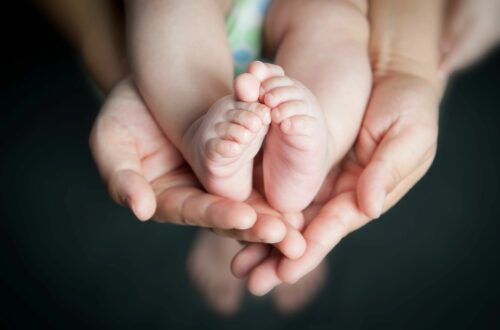According to Jean Kazez, it is implausible that life begins at conception. She suggests that an entity with life-status must be an entity that has continuity and can be individuated. To have continuity an entity must have identity conditions at t1 and t2. To be individuated an entity must have some set of conditions that set it apart from another entity. Kazez argues that the entity in the womb has neither until it is 14 days old. Thus, life cannot begin at conception. Her argument is as follows:
(1) If it is a life, then it is a unified, continuous individual.
(2) An embryo is not a unified, continuous individual.
(3) Therefore, an embryo is not a life.
Kazez assumes the truth of (1) and provides a couple of reasons to accept (2). First, in the first few days of development the conceptus can split and develop into two or more individuals. At best, the collection of cells that compose the entity at this stage are like a “flock of birds” – there may be some form of life, but not a unified, continuous individual.
Second, Kazez argues that up until about day 14 the entity that will turn into a life cannot be completely differentiated from its in-womb support structure. Consequently, since one does not accord life-status to the in-womb support structure, one cannot accord life-status to the individual.
Kazez grants that after day 14–the time at which a spinal column begins to develop–life-status can plausibly be applied to an individual.
Even if we grant Kazez (1), she does not make a good case for (2). According to the “flock of birds” argument, the collection of cells in the first few days is not a single individual so it cannot be counted as a life. But this fails to recognize the obvious fact that the collection of cells might count as more than one individual. It is simply not the case that until we can see how many individuals we have in the flock, there are no individuals. Surely, we can recognize the individual life-status of each twin even if we cannot yet observe them directly. Kazez seems to think that because we cannot identify the birds in the flock, we cannot accord them a life-status. But no one is suggesting that we can identify twins at an early stage. What we can say is that however many human persons there are, they are all worthy of life-status.
According to the second argument, an entity is only counted as a unified, continuous individual when it can be differentiated from its environment, in this case, the womb of the mother. There are two responses to this point: first, the entity in question possesses a different set of DNA to the parent. This means that one can, if one were to conduct a test, determine what cell belongs to which person (the mother or the child). Thus, though such a test is not practically possible, it does not follow that there is no distinction between the womb and the child.
Second, one wonders what conditions would count to individuate two individuals. One might say proximity, but this would entail some close proximities that adults find themselves in would count to de-individuate them. One might say the degree to which one entity is stuck to another. But imagine two individuals shaking hands and becoming paralyzed. They do not become one individual. One might say mixing or fusion of entities, but then conjoined twins cannot count as two individuals, but surely they do. There is no good way to determine an entity this way. And it is simply not enough to justify the denial of the entity’s individual life. The most it could produce is agnosticism on the matter. But agnosticism on the matter should produce caution especially when we are talking about whether an entity is a human person.
see Van Inwagen’s Material Beings for a discussion of problems of composition.




